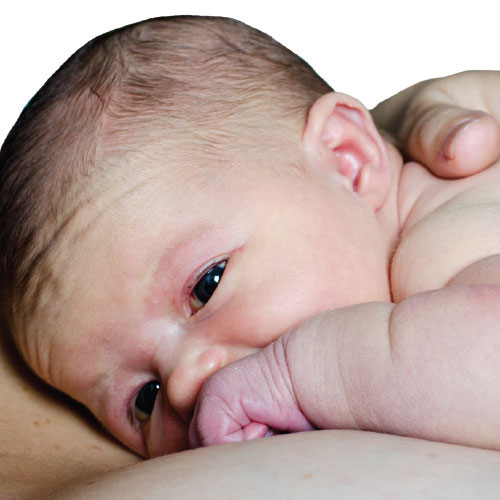Baby's Six-Wind-Cues

Excerpt from BabyCues Book...
WELCOME TO THE CHAPTER that bestows a healthy foundation of conversing and comprehension between you and your baby. By confidently reading your baby's cues, you can respond knowingly to their needs. Over time, this enhances relaxation and bonding as your baby instinctively learns your action corresponds with their full communication.
Traditionally, parents have chosen or fallen into either a demand or a routine style of newborn care. 'Demand Care' is not 'timed out' and is thought to free flow with a baby's 'cues' as they happen. 'Routine Care' is based on a 'timed out' theory, where 'cues' are also thought to be attended to but baby is woken to feed and then placed to sleep at certain times.
During my hands-on care with newborns, regardless of whether the family chose demand or routine care, one very important aspect became evident. Both forms of care were lacking vital information about a newborn's cues and a newborn's biology. Based on my discovery of these cues, I began providing care in accordance with what the babies were telling me. A new way of nurturing began to take shape where the behaviours of colic, reflux, lactose and dairy overload diminished or were eliminated time and time again. This new way is called 'Bio-logical Care'.
In the first eight weeks — before newborns respond more knowingly to their environment — the majority of their communication and body movements are related to digestion. All newborns express the same 'cues' or, if you like — communication, signs, behaviour or body language. What varies is the degree of communication. This is dependent on the newborn's DNA and how well their digestive process is cared for.
Traditionally, the ingested air a newborn swallows is thought to be bothersome, which, of course, can be true. However, like everything in life, where there is a negative there is also a positive to be found. Mother Nature's gift of ingesting air is no exception. Not only does the intake of air play an immense role in digestion, it also makes a huge contribution to our early physical, mental and emotional capabilities from the first seconds of life, until at least four months of age. Air in a newborn's body is a very powerful instrument of nature.
Six-Wind-Cues
From the moment of birth, ingested air is the initiator and/or helps to progress these five physiological developments:
- vision
- smiles
- mastication
- first ever controlled arm movements*
- first gooing and gaaing.*
The baby cues associated with the first three of these air initiated developments are:
- vision — windy stare*, rolling/fluttering eyes*
- smiles — windy smile*
- mastication — chewing motion with tongue poking out.*
These Six-Wind-Cues (marked with an asterisk) occur when air sits in the upper regions of the stomach or throat of a newborn. These cues indicate that the air which produced them is ready to be released. When parents learn to release the burp through using Nature’s Wind Sequence (the ten steps I teach to release wind and that are in my book) the baby’s Wind-Cue disappears, only to return when air once again moves to the upper regions.
When a baby is left to communicate any of these Six-Wind-Cues for too long without burping, they will eventually become unsettled. This happens because the retained burp in the upper regions stops the release of other wind that sits in the stomach. The accumulated, retained air is then left to move through the intestines, producing the behaviours of colic and reflux. The degree of these behaviours depends on how digestively overloaded the newborn feels.


